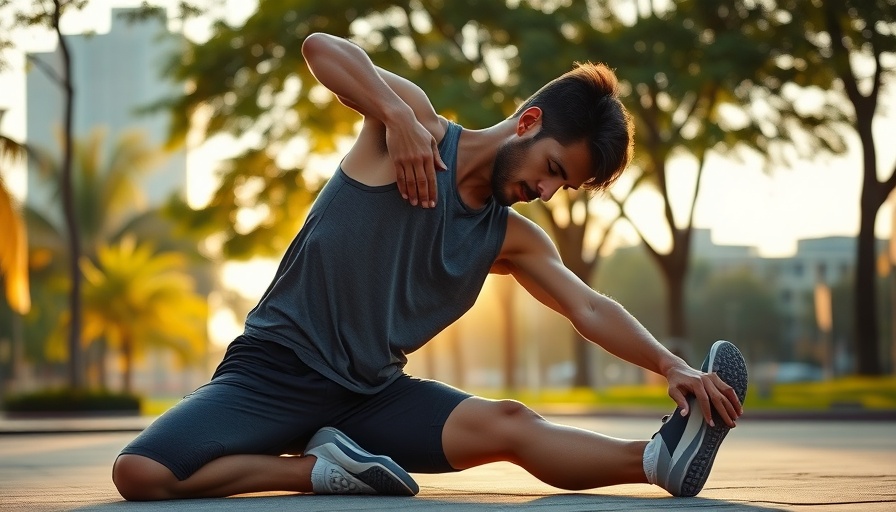
Understanding the Importance of Hamstring Health
Are tight hamstrings holding you back from reaching your fitness goals? If you’re experiencing discomfort and limited flexibility due to tight hamstrings, you’re not alone. These muscles are not just critical for athletes; they play a vital role for anyone involved in physical activity, from casual hikers to dedicated fitness enthusiasts. By addressing tight hamstrings, you can significantly improve both performance and comfort in your active lifestyle.
The Role of Hamstrings in Your Body
The hamstrings comprise a group of muscles at the back of the thigh essential for movement, posture, and overall lower body strength. These muscles assist in bending the knee, extending the hip, and stabilizing the pelvis. When hamstring muscles are tight, they not only restrict movement but can also lead to discomfort, pain, and increased injury risk. Understanding this muscle group’s function is the first step toward improving your physical health.
Common Causes of Tight Hamstrings
Tight hamstrings are prevalent among individuals of all fitness levels for various reasons:
- Overuse and Repetitive Movements: Engaging in activities like running, cycling, or weightlifting often leads to muscle tightness over time. Repetitive strains can create a cycle of discomfort that hampers overall performance.
- Muscle Imbalances: Weakness in the hamstrings compared to opposing muscle groups, such as the quadriceps, can lead to tightness. Imbalances commonly stem from poor muscle coordination and require attention to correct.
- Inadequate Warm-Up and Cool-Down: Skipping proper warm-ups or cooldowns increases the likelihood of experiencing tightness. It’s essential to prepare your muscles before physical exertion and to help them recover afterward.
- Poor Posture and Alignment: Issues like excessive lower back rounding or pelvic tilt can create tension in the hamstrings. Correcting your posture can help alleviate tightness and improve flexibility.
- Sedentary Lifestyle: Prolonged sitting shortens the hamstrings and reduces flexibility. A more active lifestyle can help counteract these effects.
The Impact of Tight Hamstrings on Your Fitness Journey
Individuals often dismiss tight hamstrings as a minor issue, but they can significantly impact overall athletic performance. Limited range of motion in the hamstrings affects gait, stability, and even power output. This can result in inefficient movement patterns that may lead to compensatory injuries in other areas of the body, such as the lower back or knees.
Real-Life Anecdotes: Overcoming Tight Hamstrings
Many athletes and casual fitness enthusiasts have found themselves struggling with tight hamstrings. One cyclist, Jordan, shared how he avoided stretching for years, which ultimately limited his performance. However, by incorporating a comprehensive mobility routine focused on hamstring flexibility, he not only improved his cycling speed but also enhanced his overall enjoyment of the sport. Stories like Jordan’s demonstrate the crucial transformation that can come from addressing muscle tightness.
Practical Strategies to Alleviate Tight Hamstrings
Here are some practical tips to help overcome tight hamstrings:
- Regular Stretching: Incorporate hamstring stretches into your routine. Hold stretches for 20-30 seconds, and make sure to perform them consistently.
- Strengthening Exercises: Focus on exercises that promote strength in both the hamstrings and their opposing muscle groups, like the quadriceps.
- Warm-Up and Cool Down: Ensure proper warm-up and cool-down protocols are in place to prepare the muscles for activity and aid in recovery.
- Posture Correction: Engage in exercises that promote good posture and alignment, thereby reducing tension in the hamstrings.
- Seek Professional Help: Don’t hesitate to consult a physical therapist or a trained coach who can help identify specific issues related to tight hamstrings.
Future Insights: The Importance of Awareness and Proactivity
As we advance in our understanding of muscle health, it’s crucial to emphasize the importance of awareness and proactive measures. The fitness community is gradually realizing that taking care of muscles like the hamstrings is integral to long-term wellness. Avoiding tightness isn't just about immediate comfort—it's about sustaining performance, achieving fitness goals, and preventing injuries well into the future.
Conclusion: Take Action for Your Mobility
Addressing tight hamstrings is a pivotal step towards enhancing your fitness and overall health. By implementing consistent stretching, strengthening, and mindful movement practices, you can significantly improve your flexibility and mobility, paving the way for a more enjoyable and productive active lifestyle. So, don't let tight hamstrings hinder your fitness journey—take the first step today!
 Add Row
Add Row  Add
Add 






Write A Comment